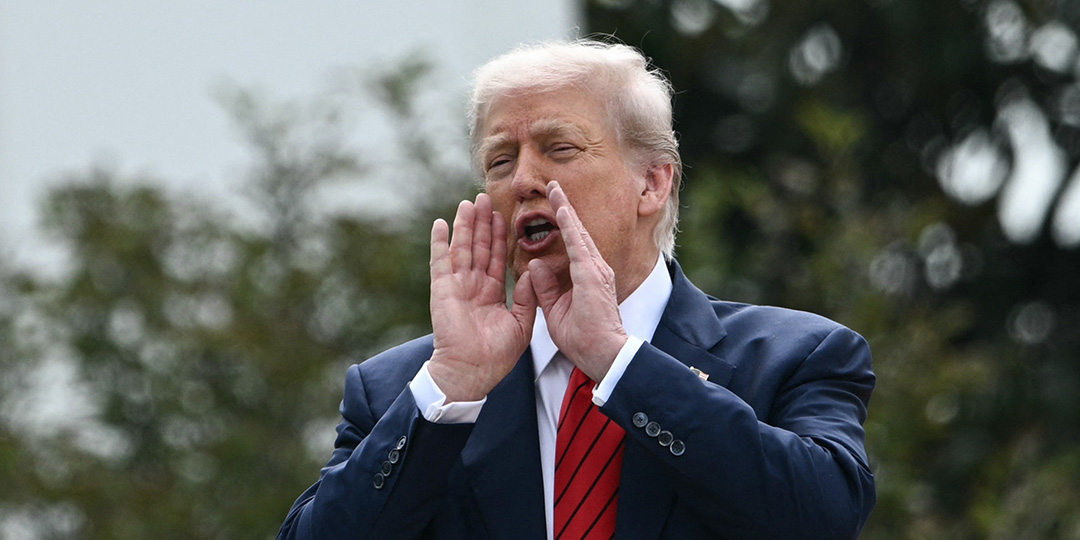US President Donald Trump signaled Tuesday that fresh tariffs on imported pharmaceuticals and semiconductors could be unveiled within the coming week, as a cascade of incoming duties promises to reshape global trading ties.
Governments around the world are bracing as new waves of US tariffs are due to take effect this week, first on many Brazilian products Wednesday and then on dozens of other economies — including the European Union and Taiwan — beginning Thursday.
Trump’s sweeping plans have sparked a flurry of activity as leaders seek to avert the worst of his threats, with Swiss officials heading to Washington on Tuesday in a last-minute push to avoid punitive duties.
But the US president appears set to widen his trade wars.
Trump told CNBC on Tuesday that upcoming tariffs on imported pharmaceuticals could reach 250 percent, while adding that he plans for new duties on foreign semiconductors soon.
“We’ll be putting (an) initially small tariff on pharmaceuticals, but in one year, one-and-a-half years, maximum, it’s going to go to 150 percent,” Trump said.
“And then it’s going to go to 250 percent because we want pharmaceuticals made in our country.”
Trump also said that Washington will be announcing tariffs “within the next week or so.”
He added: “We’re going to be announcing on semiconductors and chips.”
– India threat –
Trump has set out varying tariff rates for dozens of economies after imposing a 10-percent levy on almost all trading partners in April.
But these broad duties taking effect Thursday exclude products like pharmaceuticals, steel, aluminum and lumber, which are being separately targeted by sector.
This means that although the 39-percent tariff Swiss leaders seek to avoid come Thursday excludes pharmaceuticals, Trump’s plans for a steep levy on such imports will likely remain a point of contention in any talks.
Pharmaceuticals represented 60 percent of Swiss goods exports to the United States last year.
Outside of Switzerland, most products from the European Union face a 15 percent tariff starting Thursday, after Washington and Brussels struck a deal to avoid higher levies.
But Trump warned Tuesday that the EU could see its tariff level surge again if it did not fulfill obligations under their recent pact.
Some imports from Canada are also targeted by tariffs, although Prime Minister Mark Carney stressed Tuesday that more than 85 percent of trade between the North American neighbors remains tariff-free under existing exemptions.
Besides probing pharmaceuticals and chips imports, Trump has already imposed steep duties of 50 percent on steel and aluminum, alongside lower levies on autos and parts.
In the same CNBC interview Tuesday, Trump said he expects to raise the US tariff on Indian imports “very substantially over the next 24 hours” due to the country’s purchases of Russian oil.
This is a key revenue source for Moscow’s military offensive on Ukraine.
His pressure on India comes after signaling fresh sanctions on Moscow if it did not make progress by Friday towards a peace deal with Kyiv, more than three years since Russia’s invasion.
Moscow is anticipating talks this week with the US leader’s special envoy Steve Witkoff, and the Kremlin has criticized Trump’s threat of raising tariffs on Indian goods.
Weak employment data last week pointed to challenges for the US economy as companies take a cautious approach in hiring and investment while grappling with Trump’s radical — and rapidly changing — trade policy.
The tariffs are a demonstration of raw economic power that Trump sees as putting US exporters in a stronger position while encouraging domestic manufacturing by keeping out foreign imports.
But the approach has raised fears of inflation and other economic fallout in the world’s biggest economy.
bys/jgc
© Agence France-Presse








